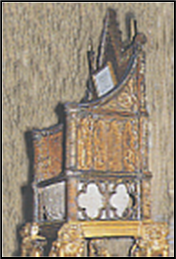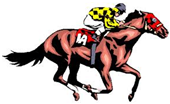


|
1603 |
Tokugawa Ieyasu becomes military governor of Japan. His reforms bring a long period of peace and stability, but the country soon cuts itself off from contact with the Western World.
|
|
1604 |
The Iranian leader Abbas I, greatest of the Safavid rulers, defeats the Ottoman Turks at the Battle of Tabriz, and later, in 1623, goes on to capture the city of Baghdad and eastern Iran.
|
|
1605 |
ThexGunpowder Plot, aimed to blow up the king, the heir to the throne, and members of parliament, ends in failure. Guy Fawkes is arrested along with the other conspirators. All are tortured and executed.
Akbar dies, and his son, Jahangir, becomes leader of the Mughal Empire. As we shall see (1632 C1), his campaign to conquer southern India is continued by his successor Shah Jahan.
TheXEnglish writer and philosopher Francis Bacon, one of the pioneers of modern scientific research, discusses scientific method in his scholarly work The Advancement of Learning.
|
|
1606 |
The explorers Pedro Fernandez de Quiros and Luis Vaez de Torres discover the New Hebrides. Torres then voyages on and finds the strait between New Guinea and Australia.
The English playwright William Shakespeare produces his tragedy Macbeth, a Scottish play written in honour of James I. Other great dramas of this period include Othello and King Lear.
|
|
1607 |
The Italian composer Claudio Monteverdi produces his first opera, The Legend of Orpheus. By his musical innovation, this proves a milestone in the development and popularity of European opera.
The first permanent English colony is established in Virginia, North America. Named Jamestown in honour of the king, it remains an important centre for some seventy years. |
|
1609 |
A truce is agreed between Spain and the United Provinces, but fighting breaks out again during the Thirty Years War, and Dutch independence is once more thrown into the balance.
The Dutch jurist and theologian Hugo Grotius writes his treatise on The Free Sea. This and a later work, On the Law of War and Peace, 1625, earn him the title Father of International Law.
|
|
1610 |
The great Italian physicist and astronomer Galileo uses an astronomical telescope for the first time, and his visual findings support the Copernican theory of the universe. He also makes important advances in the science of mechanics.
The Ulster Plantation begins whereby English and Scottish Protestants are encouraged to settle on land confiscated in six of the nine counties of Ulster in northern Ireland.
The French bishop and theologian Francis de Sales founds an order of nuns known as the Order of the Visitation of Our Lady. His best known work is his Introduction to a Devout Life.
|
|
1611 |
Peter Rubens, the great Flemish painter, returns to Antwerp after travelling in Italy, and starts work on The Descent from the Cross, one of his many baroque masterpieces.
The first English trading post in India is established at Surat, the chief port of the Mughal Empire. This marks the very beginning of Britain's long association with the subcontinent.
ThexEnglishxdramatists Francis Beaumont and John Fletcher produce two of their joint plays, A King or No King and The Maid’s Tragedy. Their works proved extremely popular.
|
|
1612 |
A clinical thermometer is invented by the Italian physician Santorio. He was the first to use precision instruments in medical practice. He also made advances in the study of metabolism.
|
|
1613 |
After a power struggle lasting nine years, Michael Romanov becomes Tsar of Russia and founds the powerful Romanov dynasty, destined to remain in power until 1917.
|
|
1614
1615 |
John Napier, the Scottish mathematician, invents logarithms, and starts work on a mechanical calculating device. He is also the first to use the decimal point in calculation.
The French parliament, the Estates General, is summoned during the early and turbulent years of the reign of Louis XIII. It breaks up in disorder and is not called again until 1789.
Ben Jonson, the English dramatist and poet, produces Bartholomew Fair, one of his best known comedies. A man of ready wit, he also wrote a series of brilliant masques to entertain the royal court.
The Spanish novelist Miguel de Cervantes completes Don Quixoto,
his famous, influential work about the travels of a would- |
|
1618 |
The Thirty Years’ War breaks out. It is fought mainly in the Holy Roman Empire (Germany) between Catholics and Protestants, but later a number of other countries join in the conflict.
Nurhachi, leader of a powerful Manchurian tribe, invades China and, setting up his own state in the province of Liaotung, paves the way for the overthrow of the Ming dynasty in 1644 (C1).
|
|
1619 |
The Dutch East India Company establishes Batavia in the Spice Islands and from there spreads its trade throughout S.E. Asia and into India, China, Japan, Iran and South Africa.
Johannes Kepler, the German astronomer, completes his three famous laws governing planetary motion. They confirm the Copernican theory and greatly assist further research. |
|
1620 |
The Pilgrim Fathers, sailing in the Mayflower, reach New England and found a settlement at Plymouth. Within ten years thousands of English settlers, mostly Puritans, join them.
A vessel designed to travel under water is invented by the Dutch scientist Cornelius van Drebbel. Over the next four years he carries out trials on the River Thames in London.
The German composer and organist Michael Praetorius completes three volumes of his Syntagma musicum, a valuable work on the instruments and instrumental music of his time.
|
|
1622 |
The Banqueting House in Whitehall, London, is completed. The masterpiece of the English architect Inigo Jones, it is a fine example of the classical style he introduced from Italy.
|
|
1623 |
Abbas I of Iran conquers Baghdad and eastern Iraq from the ailing Ottoman Empire. The empire's new Sultan, Murad IV, embarks on a series of reforms to try to stop the decline.
|
|
1624 |
Appointed chief minister, Cardinal Richelieu sets about the task of making Louis XIII of France an absolute monarch by crushing the political power of the nobles and the Huguenots.
The Flemish-
|
|
1625 |
The king, James I, who had been failing in health over the past eighteen months, dies at Theobalds, his favourite country residence, and is succeeded by his son Charles I. |
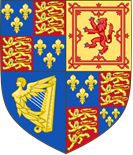






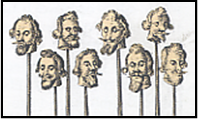

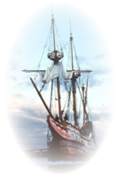 The
English navigator
The
English navigator The
Authorized Version of the Bible
The
Authorized Version of the Bible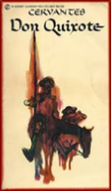

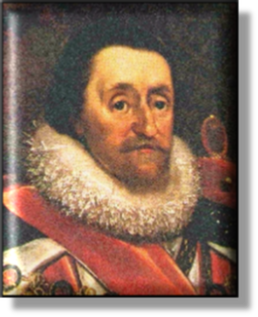
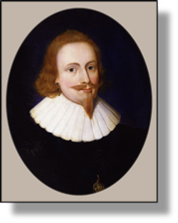
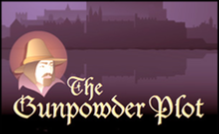

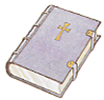 have
seen, defended the Divine Right of Kings in his
have
seen, defended the Divine Right of Kings in his 